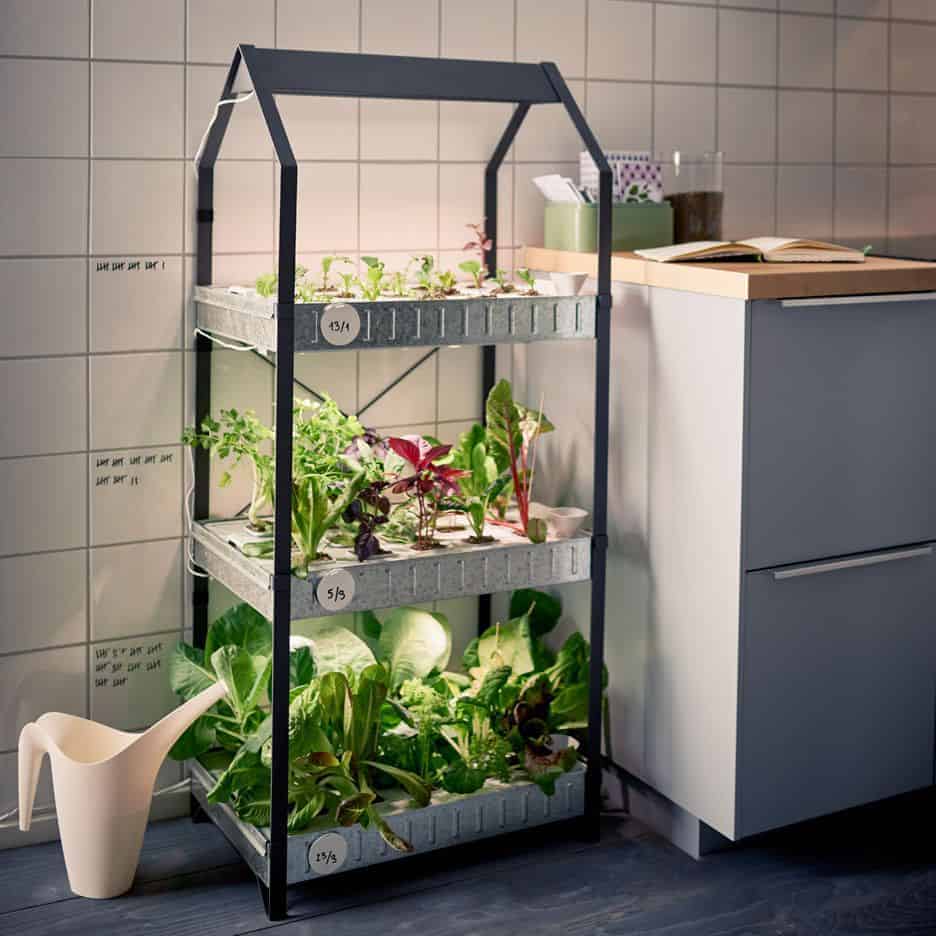Mastering Indoor Hydroponic Vegetable Gardens

Mastering Indoor Hydroponic Vegetable Gardens
Ever dreamed of having fresh, homegrown veggies right at your fingertips, even if you live in a bustling city or have no outdoor space? Welcome to the world of indoor hydroponic vegetable gardens! This isn't your grandma's garden; it's a high-tech, soil-free way to grow your favorite plants right in your own home. Let's dive in and discover how you can master this amazing method of vegetable cultivation.
What is Hydroponic Gardening?
Picture this: plants growing without soil, suspended in water, or nestled in a inert medium like rockwool or clay pellets. That's hydroponic gardening in a nutshell! Instead of soil, plants get their nutrients from a nutrient solution – a mix of water and essential minerals. It's like giving your plants a multivitamin drink tailored just for them.
Why Choose an Indoor Hydroponic Vegetable Garden?
Space-Saving and Perfect for Urban Farming
Live in an apartment or condo with no yard? No problem! An indoor hydroponic vegetable garden can thrive in tiny spaces, even a closet or spare room. It's the ultimate space-saver, making it perfect for urban farming.
Faster Growth, Bigger Yields
With hydroponic gardening, plants grow faster and produce more because they don't have to work as hard to get nutrients. It's like they're on a super-efficient diet, turning your indoor garden into a powerhouse of production.
Year-Round Harvests
Since your garden is indoors, you control the environment. That means you can grow your favorite veggies 365 days a year, regardless of the weather outside. It's like having an endless summer in your living room!
Setting Up Your Indoor Hydroponic Vegetable Garden
Choose Your System
There are several types of hydroponic systems, from simple Deep Water Culture (DWC) setups to more complex Nutrient Film Technique (NFT) or drip systems. Each has its pros and cons, so do your research to find the best fit for you.
Pick Your Plants
Not all indoor plants thrive in hydroponic systems. Leafy greens, herbs, and compact veggies like lettuce, spinach, and radishes do well. But stay away from root vegetables like carrots or potatoes, as they need soil to develop properly.
Light It Up
Since you're growing indoors, you'll need to provide artificial light. LED grow lights are a popular choice because they're energy-efficient and long-lasting. Just make sure your lights provide the right spectrum for plant growth.
Dial In Your Nutrient Solution
Plants need specific nutrients to thrive, and in hydroponic gardening, you're in charge of providing them. You can buy pre-mixed nutrient solutions or mix your own from individual components. Remember to monitor and adjust the pH and electrical conductivity (EC) regularly to keep your plants happy.
Maintaining Your Indoor Hydroponic Vegetable Garden
Keep It Clean
Cleanliness is crucial in hydroponic gardening. Algae and bacteria can wreak havoc on your system, so keep everything clean and sterile. Regularly change your nutrient solution and clean your equipment to prevent problems.
Monitor Your Plants
Keep a close eye on your plants for signs of stress or nutrient deficiencies. Yellowing leaves, slow growth, or wilting can all indicate issues that need addressing.
Control Your Environment
Since you're growing indoors, you control the temperature, humidity, and airflow. Most plants prefer temperatures between 65-75°F (18-24°C) and humidity around 40-60%. Proper airflow helps prevent mold and mildew, so consider adding a small fan to your setup.
Troubleshooting Common Problems
Nutrient Deficiencies
If your plants show signs of nutrient deficiencies, like yellowing leaves or stunted growth, check your nutrient solution. Make sure you're providing the right mix of nutrients and that your pH is within the proper range (usually 5.5-6.5).
Pests and Diseases
Even indoors, pests and diseases can strike. Keep your garden clean, monitor for signs of trouble, and be ready to treat issues promptly. Neem oil and other organic pesticides can help control pests, while fungicides can tackle diseases.
System Failures
Equipment can fail, so it's essential to have a backup plan. Keep spare parts on hand and check your system regularly to catch potential problems early.
Harvesting and Enjoying Your Bounty
Once your veggies are ready, it's time to harvest! Most leafy greens can be harvested continuously – just snip off what you need and let the plant keep growing. For other veggies, follow specific harvesting guidelines to ensure the best flavor and texture.
Expanding Your Indoor Hydroponic Vegetable Garden
Once you've mastered the basics, why not expand your garden? Try growing more varieties, experiment with different systems, or even automate your setup with timers and sensors. The sky's the limit!
For more tips and tricks, check out this comprehensive guide on indoor hydroponic gardening.
Conclusion
Mastering indoor hydroponic vegetable gardens opens up a world of fresh, homegrown produce right in your own home. It's a rewarding hobby that combines science, technology, and nature. So, what are you waiting for? Get growing!
FAQs
Q: Can I grow fruits in my indoor hydroponic garden? A: Yes, you can! Strawberries, for example, do well in hydroponic systems. However, larger fruit trees may not be practical due to space and light requirements.
Q: How often should I change my nutrient solution? A: It depends on your system and plant size, but generally, every 1-2 weeks is a good starting point. Monitor your solution's pH and EC to know when it's time for a change.
Q: Can I use tap water for my hydroponic garden? A: Tap water can work, but it's often better to use filtered or reverse osmosis water to avoid impurities and maintain better control over your nutrient solution.
Q: How much light do my plants need? A: Most veggies need around 14-16 hours of light per day. However, this can vary, so research your specific plants' needs.
Q: What's the best way to prevent algae in my system? A: Keep your system clean, change your nutrient solution regularly, and consider using opaque containers to block light and inhibit algae growth.
0 Response to " Mastering Indoor Hydroponic Vegetable Gardens"
Post a Comment